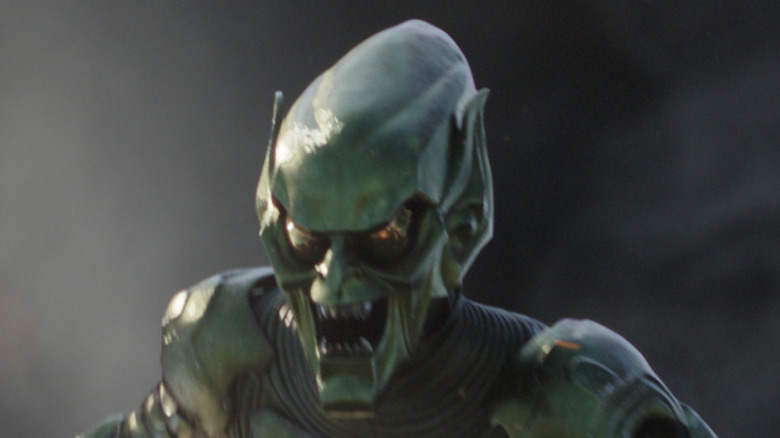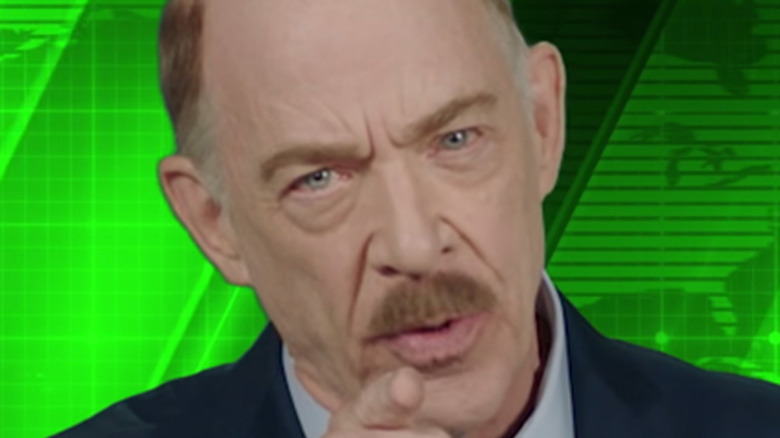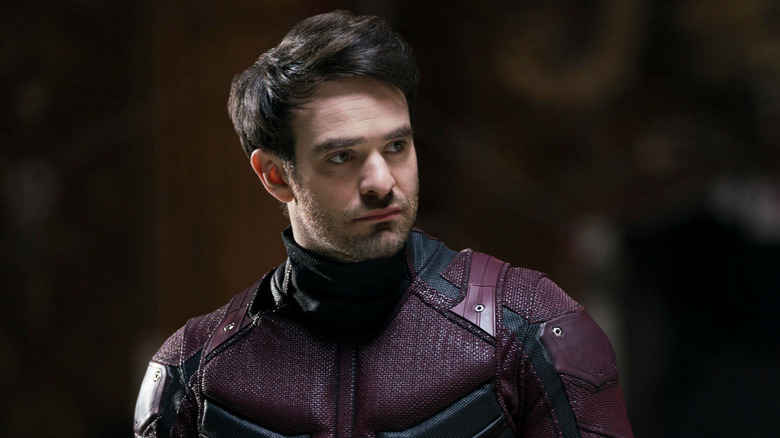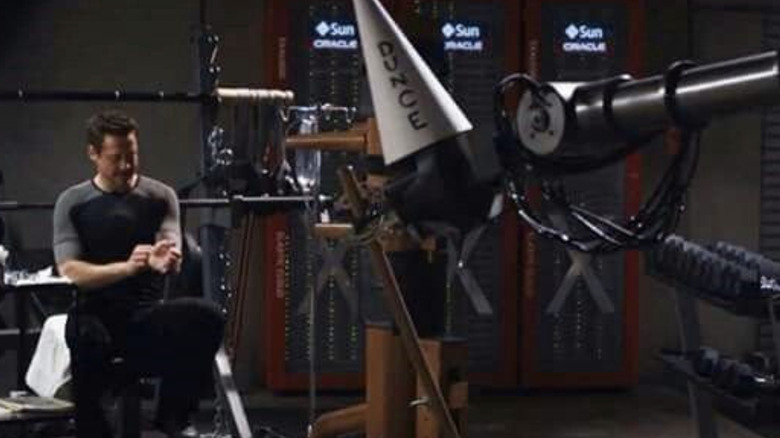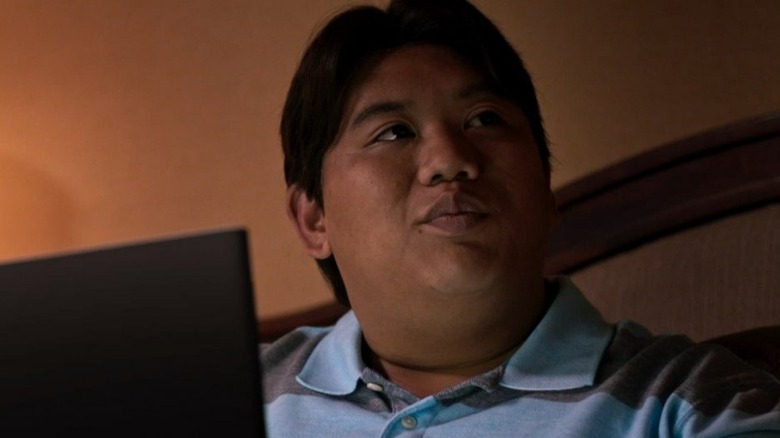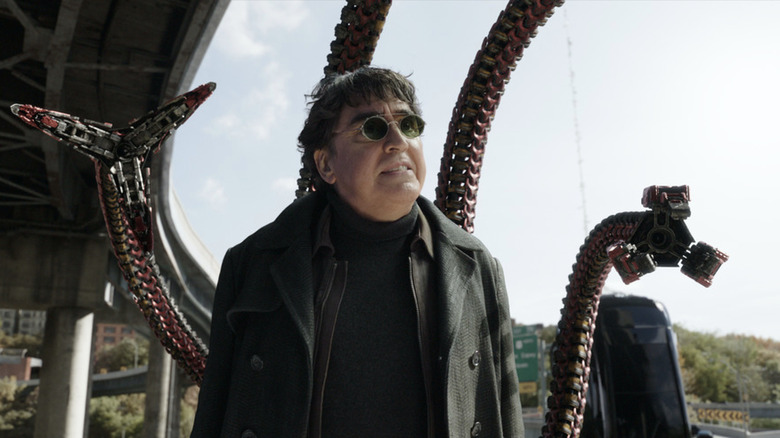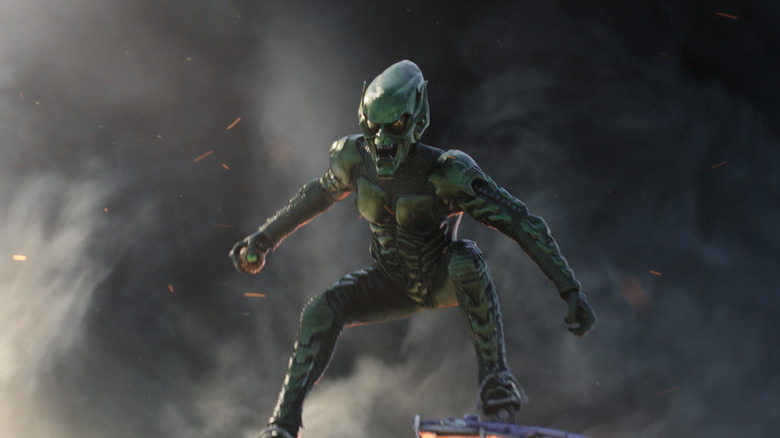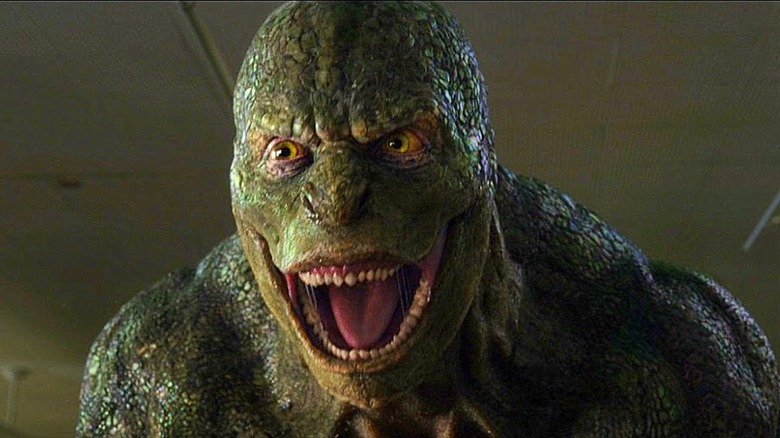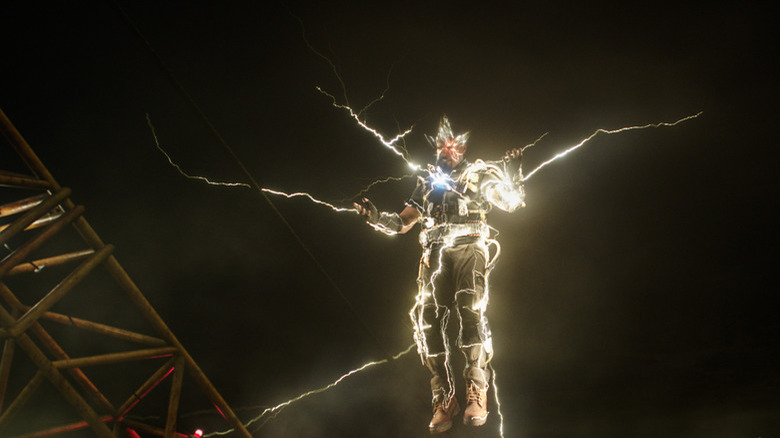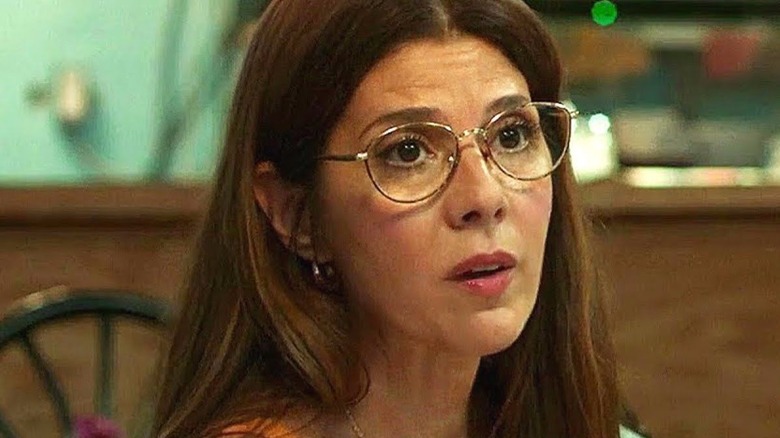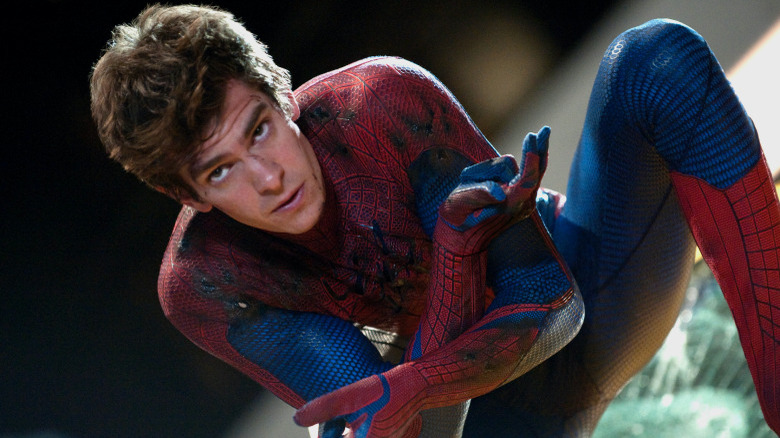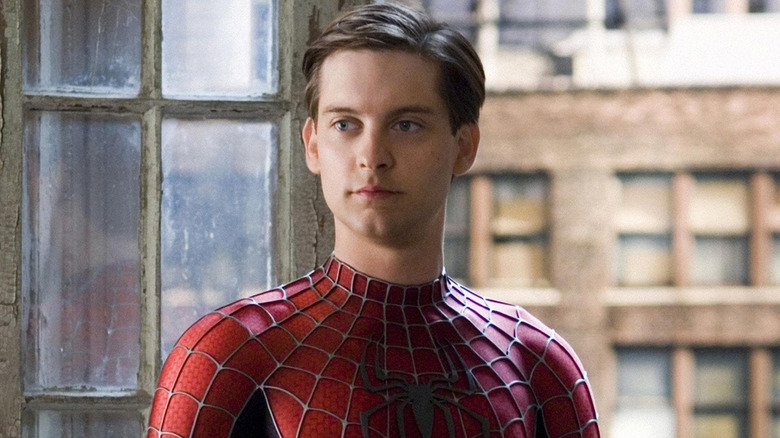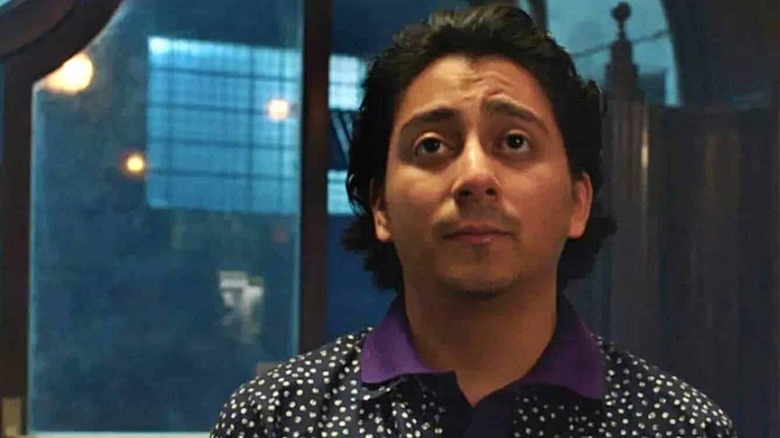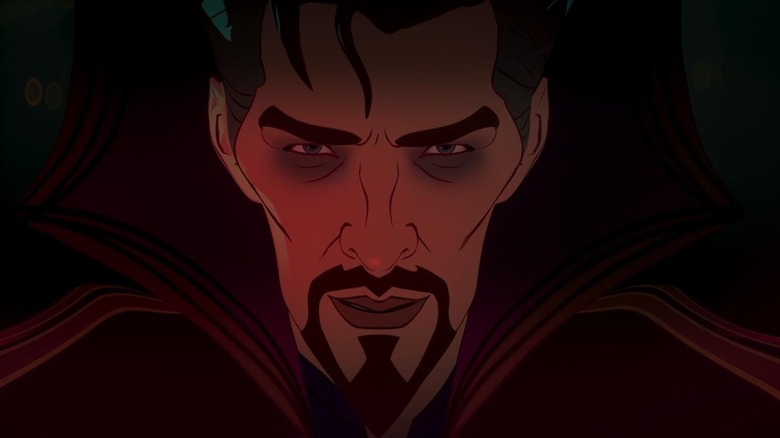Characters In Spider-Man: No Way Home Who Mean More Than You Realize
The following article contains major spoilers for "Spider-Man: No Way Home."
"Spider-Man: No Way Home" boasts an epic mash-up of friends and foes spanning the entire catalog of Spider-Man films beginning with 2002's "Spider-Man." The third movie in Tom Holland's Spidey trilogy doesn't bring us any truly new faces, but we do learn quite a bit more about the characters we already know and love (or love to hate).
Between giving some long-forgotten villains a new lease on life, bringing closure to our OG Spider-Men, and possibly setting up some exciting new journeys for some of the franchise's more minor characters, there's a lot to love about "No Way Home." Additionally, we get some delightful comic references and nods to the original films — even within the characters of Tom Holland's Spider-Man universe. The movie's purpose is certainly to be a love letter to every generation of "Spider-Man" fans, and it may not introduce a ton of new characters, but the substance of the movie is real within its heart and the characters. You already know them, but did you notice these details about these "No Way Home" characters? Their arcs just might be more important than you realized.
J. Johah Jameson
Fans may have recognized J. Jonah Jameson when he briefly popped up in "Far From Home" in the mid-credits scene. That's because actor J.K. Simmons reprised his role as The Daily Bugle's shadiest reporter. You might remember that curmudgeonly editor in the OG "Spider-Man" trilogy who fleeces Peter, creates a smear campaign about our friendly neighborhood Spider-Man, and frequently tries to get away without adequately paying his freelancers. All in all, he's kind of a jerk.
Well, not only does he appear in Holland's trilogy, but J.K. Simmons brings a fresh new vibe to the reporter we love to hate while we watch an updated version of his typical antics. When it comes to the comics, Jameson first appeared on "The Amazing Spider-Man" #1 in 1963. But beyond his rich history with the comics and Spidey universe as a whole, he's relevant today more than ever.
With an onslaught of shady "news" sites boasting outrageous conspiracies, fake science, and a host of misinformation, calling out money-grubbing reporters like Jameson couldn't be more important. Seeing guys like this on our screens helps adapt newer generations into choosing facts over fiction and making sure they get their news from a credible source. If you grew up watching Spider-Man content as a kid, you just might have the foresight to change the channel when guys like this come on the screen.
Matt Murdock
It's the moment we've all been waiting for: Daredevil has finally joined the MCU. Okay, Matt Murdock's "Spider-Man: No Way Home" cameo may be small and seemingly insignificant, but it actually changes everything. Ever since Marvel sold the film/TV rights to vast catalog of work multiple companies, the respective worlds have become a fractured kaleidoscope of characters just out of reach from one another. For a long time, the MCU didn't have the rights to have Spider-Man join the Avengers, and Deadpool was imprisoned with the X-Men — unable to hang out (or make out) with Spidey despite their comic book dalliances.
Yet, inch by inch, we're getting more leeway on which characters can interact with each other — and the selling of rights. While Charlie Cox's cameo in "No Way Home" merely consists of him taking on Peter's case once his identity is ousted, the scene is arguably one of the most important moments in the movie. Why? Because it opens up the door for all of Netflix's Marvel shows to appear in the MCU. The possibilities are endless.
DUM-E
Okay, Tony Stark, we get it. You're a cool nerd, and you kind of bully your droids. Tony destines his arm robot for a life of mockery, giving him a name like DUM-E, but the bot makes the best of it. Despite his savage name and occasional DUNCE hat accessories, DUM-E watches on as Peter makes the prototypes for some of the AU villains — giving the robot purpose even after his creator's death.
Tony didn't always treat DUM-E very nicely, but he is a creation that Tony made in his father's workshop, adding a sentimental component to the bot. DUM-E even saved Stark's life once when he couldn't reach his arc reactor and didn't have the energy to keep trying, and it's a lovely nod to Tony that Happy still keeps DUM-E in his apartment. Of course, with the state of Happy's apartment following Green Goblin's bomb onslaught, DUM-E might be a goner, but it's nice to see Tony's friends honor him even after he's gone. It sure beats Electro using his arc reactor for nefarious power trips.
Betty Brant
We first meet the MCU's Betty Brant back "Spider-Man: Homecoming." Even then, she's a spunky reporter who banters on-air during the school's morning announcements. What is it with movie high schools and in-school broadcasts? Is that a thing that ever actually happens?
In a blink-and-you'll-miss-it scene, Betty pops up on a more credible TV broadcast than The Daily Bugle, reporting from Midtown News. It's nice to see her living out her journalistic aspirations, but it's even better knowing that she's far from the clutches of Jameson's toxic masculinity. That's right — Betty Brant is also a character in the OG "Spider-Man" trilogy. You might remember the sweet brunette woman who processes Peter's paychecks from the 2002 trilogy. Well, that's the alternate universe's Betty, and it's nice to see that she's come a long way since those days.
Ned Leeds
You may think you know everything you need to know about Ned but think again. Ned Leeds may seem like a normal nerd with a superhero for a best friend, but "No Way Home" has fans wondering if there's more than meets the eyes to the computer whiz. For example, Ned accidentally conjures a portal when he gets ahold of Doctor Strange's Sling Ring. Not only that, but he manages to open a portal to an entirely different universe.
Sure, magical rings are powerful and all, but they don't typically do that for just anyone. If it weren't for Ned's apparent magical abilities, we would never see Andrew Garfield and Toby Maguire's respective Spider-Men show up on the scene. Ned is so naturally talented with sorcery that he even impresses Wong with his portal-making.
If Doctor Strange didn't wipe everyone's memories of Peter, we'd have a good chance of Wong taking the new graduate under his wing for some sorcery apprenticing. Even so, his magical abilities are still a part of him, and they will no doubt show up down the line one way or another. In fact, Ned could be gearing up to be the next Strange — or Wong.
Doc Ock and Sandman
"Spider-Man" fans have been holding out for Alfred Molina's Doc Ock to be their hero since the second film of the OG trilogy, and they finally got their wish during Holland's third Spidey flick. While "The Amazing Spider-Man" comic book fans know him as Doctor Octopus, Otto Octavius doesn't get nearly enough screen time in the OG trilogy. In the comics, he's often depicted as a member of the Sinister Six — a group of supervillains who have some major beef with our friendly neighborhood Spider-Man.
Yet out of all of the on-screen Spider-Man villains we've seen in the movies throughout the years, Doc Ock is one of the most sympathetic and likable villains. His octopus creation was never for the power. He wants to change the world for the better, but as we often see play out in comic films, it doesn't exactly work out in his favor. However, the Doc gets his chance to shine in "No Way Home," expounding on his original redemption arc and digging deep into his character for a more well-rounded arc that allows him to become the hero and save his fellow villains.
Alternatively, we get a whole lot more backstory for Sandman in "Spider-Man 3" than "No Way Home." His cameo consists of helping out Peter a bit, then lashing out at him, and finally, just begging to get home — to whatever time period the villains end up in. He does end up cured, so that's a bonus point, but his appearance is fairly superficial outside of that detail.
Green Goblin
There's a pretty strong case for Norman Osborne being the most fascinating (and exciting) Spider-Man villain we've ever seen grace our screens. Yet while his chaotic energy is a blast to watch, we never really get much emotional depth from Willem Dafoe's Green Goblin. Now, that's not to say that Dafoe's acting isn't phenomenal (because it is), but he's never given the space to explore the deep psyche of his character. In the OG trilogy, we've got a guy with an evil alter ego who takes over his consciousness, but he rarely fights back. That's a fascinating study on the human condition, but rather than honing in on that power struggle, we get more demonic laughter and bomb-slinging than actual depth.
Luckily, "No Way Home" gives Dafoe the opportunity to brilliantly dig into the struggle between good and evil, and we see a deeper, more emotional side to Norman than we've ever witnessed on-screen. Green Goblin certainly wasn't Peter's first villain in the comics, flying onto the pages in 1964 during the 14th issue of "The Amazing Spider-Man." However, he's easily a movie favorite for fans, and he finally gets his time to truly shine in "No Way Home."
The Lizard
Dr. Curtis Connors, or The Lizard, is another one of Spidey's oldest foes, first slithering on the scene in "The Amazing Spider-Man" #6 comics. OG trilogy fans might remember a different version of Dr. Connors, who serves as Peter's professor in the second and third films. While he aids Peter in his symbiote research, we never get an inkling that he's trying to turn himself into a lizard hybrid. But perhaps that was the plan for a new movie. In Andrew Garfield's "The Amazing Spider-Man," though, we get a full-fledged Lizard in all of his scaly glory.
The film does a great job setting his descent into the sewers in motion as he gets deeper and deeper into his villainy. Yet with a redemption arc already in the books at the end of Garfield's first movie, "No Way Home" doesn't spend as much time fleshing out his character. The Lizard is a fascinating tale of a dream gone awry despite its best intentions. The minute things started going south, the good doctor should have bailed on his mission. Hopefully, the Peters convince him not to go down that road again.
Electro
As great as Sam Raimi's OG trilogy was at creating epic villains for Toby Maguire's films, none of them get much in the way of character exploration or a backstory. In "The Amazing Spider-Man 2," Electro arguably has the most well-developed and executed villainous backstory of any Spidey foe we've seen on the big screen. The movie spends ample time building up his pre-villainous path, defining his humanity, and ultimately reaching his breaking point when the world has just shafted him too much.
Electro is a cautionary tale on a dismal world that's largely responsible for creating a good number of its own monsters. While Electro needs to be held accountable for his actions, had the people of Oscorp treated Max better, maybe Gwen would still be alive in Garfield's universe. However, as Electro says, the moral of the story is, "Damn, gotta be careful where you fall" when you live in a sci-fi world.
Of course, Electro hails from a slightly later comic, marking his first appearance in "The Amazing Spider-Man" #9 in 1964. He also makes his way into Sinister Six territory. Electro doesn't get a whole lot of screen time in "No Way Home," and most fans could do without him besmirching Tony's arc reactor, but his appearance does tease one thing: Miles Morales. He muses how he wishes there were a Black Spider-Man, and that he hopes there's a universe where that's true — which any Spidey fan can confirm. Could this be the film's subtle way of introducing Miles into the MCU?
Aunt May
Aunt May: We know her, we love her, and now we mourn her. Over the years, we've watched countless iterations of Spider-Man lose Uncle Ben and begin his on-screen journey in the same place with the same repeated plotline. When Tom Holland's Spider-Man debuted, he offered a refreshing change of pace from the story we've seen repeated time and time again. Instead of Uncle Ben being in the picture, we have a younger version of Aunt May (Marisa Tomei) that spices up the story.
However, this is still a Spider-Man tale, so it was only a matter of time before May uttered Ben's most iconic words: "With great power, there must also come great responsibility." But we also know what those words are a prelude for: death. While Aunt May uttering the iconic phrase marks its first appearance in the MCU, they're also her kiss of death. We may watch Aunt May die in "No Way Home," but her presence with Peter has never been stronger. Her compassion and belief in the best of people saves a handful of villains and sets Peter on his journey to become the best web-slinger he can possibly be.
Andrew Garfield's Peter Parker
For some reason, Andrew Garfield's Spider-Man tends to get the shaft when it comes to fan-favorite Spideys, but he provided a refreshing take on the hero back in 2012. Yet, his storyline felt incomplete with just two films under his belt. We leave off "The Amazing Spider-Man 2" following the tragic death of Peter's true love Gwen Stacy (Emma Stone), and his attempts to give up his role as Spider-Man. After watching Gwen fall down a tower to her death just a second too late to catch her, Peter is a shell of his former self.
When we meet Peter again in "No Way Home," it's clear that Gwen's death still haunts him. What-ifs and guilt plague him, but his shot at redemption in Holland's third film marks one of the movie's best moments. When Holland's MJ falls in an eerily similar way to Gwen, Garfield's Peter does what he failed to do before: save the girl.
The moment is everything fans wished it could have been back in Garfield's second film. By saving our Peter's girl, he heals some of the wounds he's been ignoring for years. It's poetic, lovely, and honors the wonderful Spider-Man that Garfield brought to life. With his cameo in "No Way Home," fans can rest easy knowing their Spidey gets some closure — and prevents another Peter from a lifetime of the grief he never stops grappling with.
Toby Maguire's Spider-Man
Fans tend to stan Toby Maguire's Spider-Man, but our OG web-slinger isn't without his faults. From the very first moments Maguire's Peter gets his power, he uses it to get back at his bully and fight people he didn't have the strength to stand up to before. And sure, they usually deserve it, but once you give in to that initial impulse, it's even harder to stop yourself the next time — especially when you have superpowers.
Whether it's finding (and destroying) Uncle Ben's alleged killer, fighting Green Goblin, or getting back at MJ, Peter is quick to fall into anger and vengeance mode — and it's cost him some of the people he loves most. However, "No Way Home" offers OG Peter to right his wrongs by lending a helping hand to the newest Spider-Man.
Like he lost Uncle Ben, Holland's Peter is fresh from the wound of losing his Aunt May to Green Goblin. Rather than letting Holland's Peter descend into the same darkness he did, OG Peter helps him work through it, sparing Norman — but most importantly, sparing his webbed counterpart from besmirching May's memory with murder. While Maguire's third Spider-Man film leaves a lot to be desired, his appearance in "No Way Home" offers a much more cathartic ending for the aged Spidey.
Flash Thompson
With great symbiotes come great responsibility, but as we know, Flash Thompson doesn't have much the latter. Before "The Amazing Spider-Man" comic series came into play, Flash Thompson made his Marvel debut in "Amazing Fantasy" #15. For anyone who needs brushing up on their Spider-Man comics history, that's the very same issue that Spidey himself debuted. As it stands, Flash and Peter have been intertwined in a web since the very beginning, so it's not surprising he has a deeper history than we have yet to see on-screen.
In "Spider-Man 3," the introduction of the symbiote and Venom provides the perfect opportunity to give Flash, played by Joe Manganiello, the chance to shine. Instead, that honor (cursse) goes to its more common host: Eddie Brock (Topher Grace). However, it looks like the MCU might be heading in a different direction following the introduction of the "Venom" version of Eddie in the movie's post-credits scene. Flash has a laundry list of experiences involving the symbiote in the comics — including becoming regular old Venom, Anti-Venom, and Agent Venom. Without the series' own Eddie Brock, it seems like Flash just might be the hostess with the mostest in future films.
Dark Doctor Strange
It's feeling a little strange around here, no? There's no denying that Strange is a bit off his game in "No Way Home" with jumbled spell work and quite a few hiccups in his all-knowing plans. Given how often Doctor Strange has screwed with time travel, memory spells, and other finicky magic, it was only a matter of time before his meddling caught up with him — and it appears that time has come.
The post-post credits scene is one of the biggest we've seen in these nuggets yet, boasting a pretty big baddie: evil Doctor Strange. Now, this isn't the first time the MCU has dabbled with a dastardly Doctor Strange. The "What If...?" episode "What If... Doctor Strange Lost His Heart Instead of His Hands" offers fans a glimpse at what could happen if Strange fell down a rabbit hole of obsession in his attempts to rewrite history.
Each time the sorcerer plays God, he gets closer and closer to becoming a shell of his former self, abandoning all morals in the pursuit of carnal power. We spend all of "No Way Home" examining how good people can become villains. And while we don't know precisely what sparks this change in Strange, it's not looking good for "Doctor Strange and the Multiverse of Madness." Buckle up, kids. It looks like we may see the Necromancer version of Strange — reminiscent of his '70s Counter-Earth comics run.
